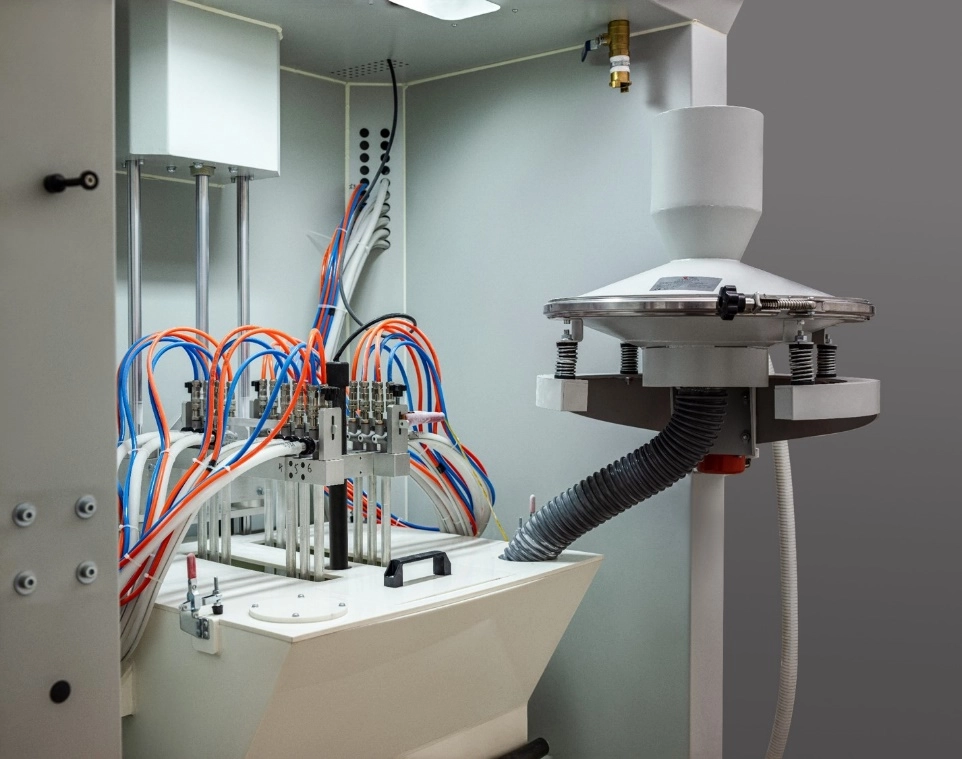Content Menu
● Understanding Powder Sieving
>> What is Powder Sieving?
>> Importance of Powder Sieving
● Challenges in Harsh Industrial Environments
>> Dust and Contamination
>> Moisture and Temperature Variability
>> Equipment Durability
● Best Practices for Powder Sieve Operation
>> 1. Selecting the Right Equipment
>>> Material Selection
>>> Design Considerations
>> 2. Implementing Effective Dust Control Measures
>>> Enclosed Systems
>>> Local Exhaust Ventilation
>> 3. Regular Maintenance and Monitoring
>>> Scheduled Inspections
>>> Performance Monitoring
>> 4. Training and Safety Protocols
>>> Operator Training
>>> Safety Equipment
>> 5. Optimizing Sieving Processes
>>> Adjusting Operating Parameters
>>> Utilizing Advanced Technologies
● Conclusion
● Frequently Asked Questions
>> 1. What are the main benefits of using powder sieves in industrial applications?
>> 2. How can dust control be effectively managed during powder sieving?
>> 3. What materials are best for constructing powder sieves in harsh environments?
>> 4. How often should powder sieving equipment be inspected?
>> 5. What training should operators receive for safe powder sieving?
In the realm of industrial processing, powder sieving plays a crucial role in ensuring product quality and operational efficiency. This article delves into the best practices for operating powder sieves in harsh industrial environments, where factors such as dust, moisture, and temperature fluctuations can significantly impact performance. By adhering to these practices, industries can enhance productivity, maintain safety standards, and ensure the integrity of their products.

Understanding Powder Sieving
What is Powder Sieving?
Powder sieving is a mechanical process used to separate particles of different sizes from a bulk powder. This process is essential in various industries, including pharmaceuticals, food processing, and chemicals, where the uniformity of particle size can affect product quality and performance.
Importance of Powder Sieving
The primary goal of powder sieving is to achieve a consistent particle size distribution. This consistency is vital for:
- Product Quality: Uniform particle sizes ensure that products meet specific standards and perform as expected.
- Process Efficiency: Properly sieved powders flow better and are easier to handle, reducing downtime and increasing throughput.
- Safety: In industries dealing with hazardous materials, effective sieving can minimize risks associated with dust explosions and contamination.
Challenges in Harsh Industrial Environments
Operating powder sieves in harsh environments presents unique challenges:
Dust and Contamination
Dust generated during sieving can lead to contamination of the product and pose health risks to workers. Implementing dust control measures is essential to maintain a safe working environment.
Moisture and Temperature Variability
Fluctuations in moisture and temperature can affect the properties of powders, leading to clumping or changes in flowability. This variability can hinder the sieving process and affect the final product quality.
Equipment Durability
Harsh environments can accelerate wear and tear on sieving equipment. Choosing the right materials and designs for sieves is crucial to ensure longevity and reliability.
Best Practices for Powder Sieve Operation
1. Selecting the Right Equipment
Material Selection
Choose sieving equipment made from durable materials that can withstand harsh conditions. Stainless steel is often preferred for its resistance to corrosion and ease of cleaning.
Design Considerations
Opt for sieves designed for specific applications. For example, vibratory sieves are effective for dry powders, while centrifugal sifters are better suited for sticky or wet materials.
2. Implementing Effective Dust Control Measures
Enclosed Systems
Utilize enclosed sieving systems to minimize dust exposure. These systems can help contain dust and prevent contamination of the surrounding environment.
Local Exhaust Ventilation
Install local exhaust ventilation systems to capture dust at the source. This not only protects workers but also maintains product integrity.
3. Regular Maintenance and Monitoring
Scheduled Inspections
Conduct regular inspections of sieving equipment to identify wear and tear. This proactive approach can prevent unexpected breakdowns and maintain operational efficiency.
Performance Monitoring
Implement monitoring systems to track the performance of sieves. This data can help identify issues early and optimize the sieving process.
4. Training and Safety Protocols
Operator Training
Ensure that operators are well-trained in the use of sieving equipment and understand the importance of safety protocols. This training should include proper handling techniques and emergency procedures.
Safety Equipment
Provide appropriate personal protective equipment (PPE) for operators, including masks, gloves, and goggles, to protect against dust exposure.
5. Optimizing Sieving Processes
Adjusting Operating Parameters
Fine-tune operating parameters such as vibration frequency and amplitude to optimize the sieving process for different materials. This adjustment can enhance efficiency and product quality.
Utilizing Advanced Technologies
Consider integrating advanced technologies such as ultrasonic sieving systems, which can reduce mesh blinding and improve the efficiency of the sieving process.
Conclusion
Effective powder sieving in harsh industrial environments requires a comprehensive approach that encompasses equipment selection, dust control, maintenance, training, and process optimization. By implementing these best practices, industries can enhance product quality, improve operational efficiency, and ensure a safe working environment.

Frequently Asked Questions
1. What are the main benefits of using powder sieves in industrial applications?
Powder sieves help achieve consistent particle size distribution, improve product quality, enhance process efficiency, and ensure safety by minimizing dust exposure.
2. How can dust control be effectively managed during powder sieving?
Implementing enclosed systems, local exhaust ventilation, and regular cleaning protocols can significantly reduce dust exposure and contamination risks.
3. What materials are best for constructing powder sieves in harsh environments?
Stainless steel is often the preferred material due to its durability, resistance to corrosion, and ease of cleaning.
4. How often should powder sieving equipment be inspected?
Regular inspections should be conducted based on the manufacturer's recommendations, typically every few months, to identify wear and prevent breakdowns.
5. What training should operators receive for safe powder sieving?
Operators should be trained in equipment handling, safety protocols, emergency procedures, and the importance of using personal protective equipment.
Hot Tags: China, Global, OEM, private label, manufacturers, factory, suppliers, manufacturing company










































 .
. 